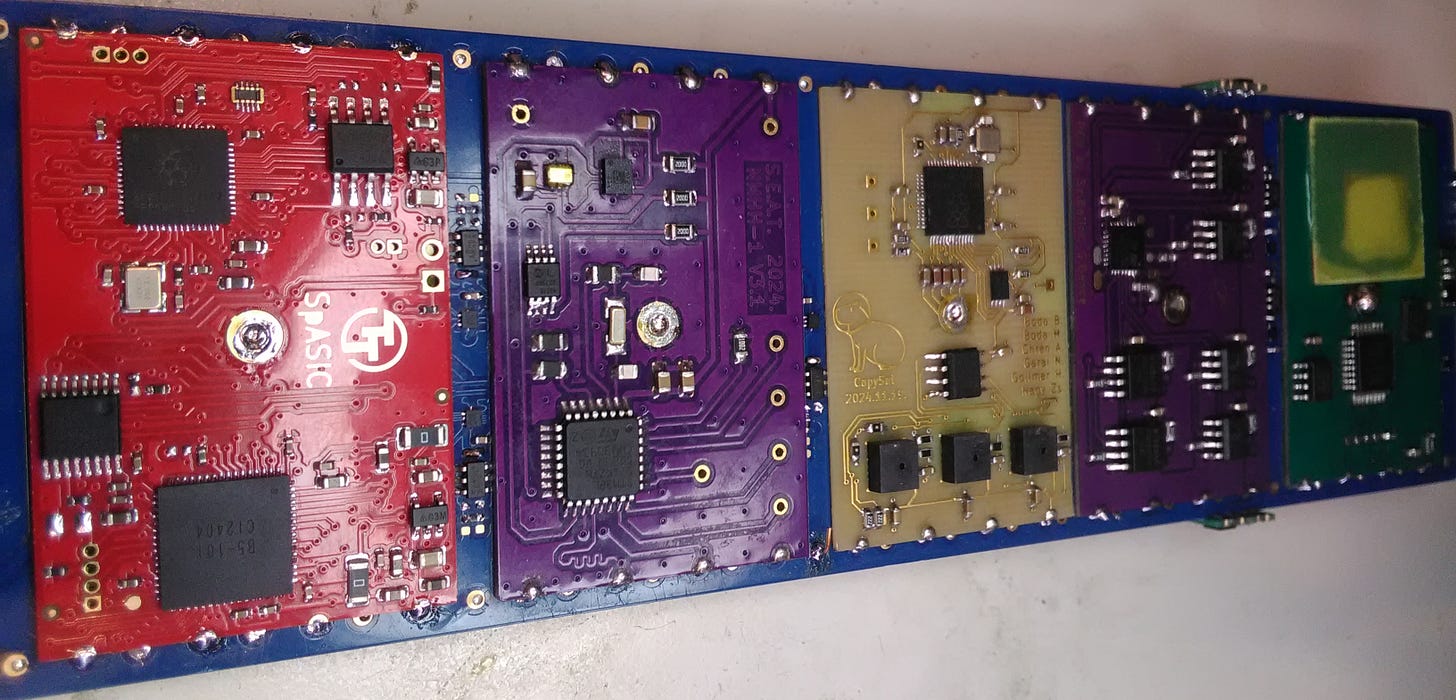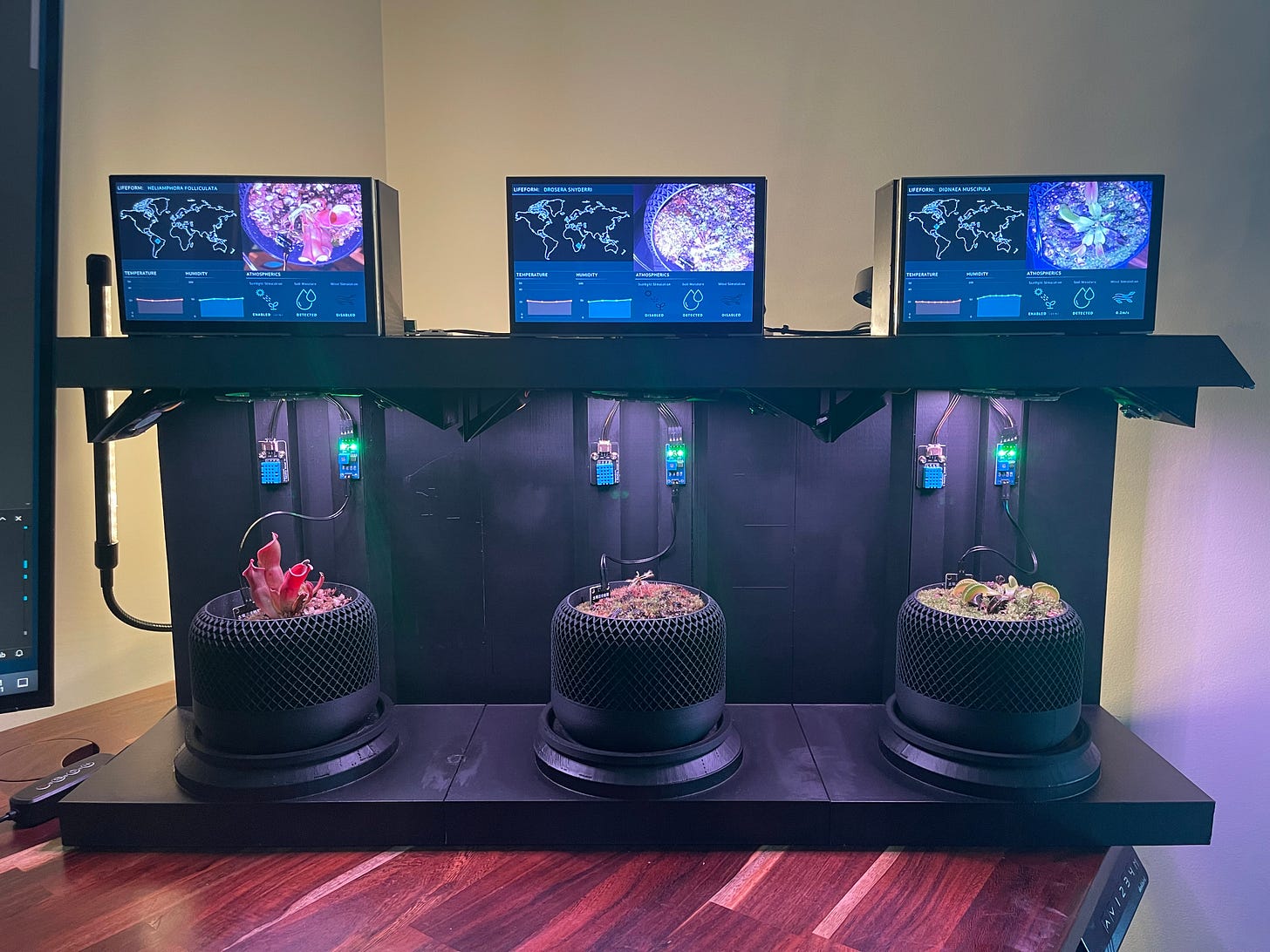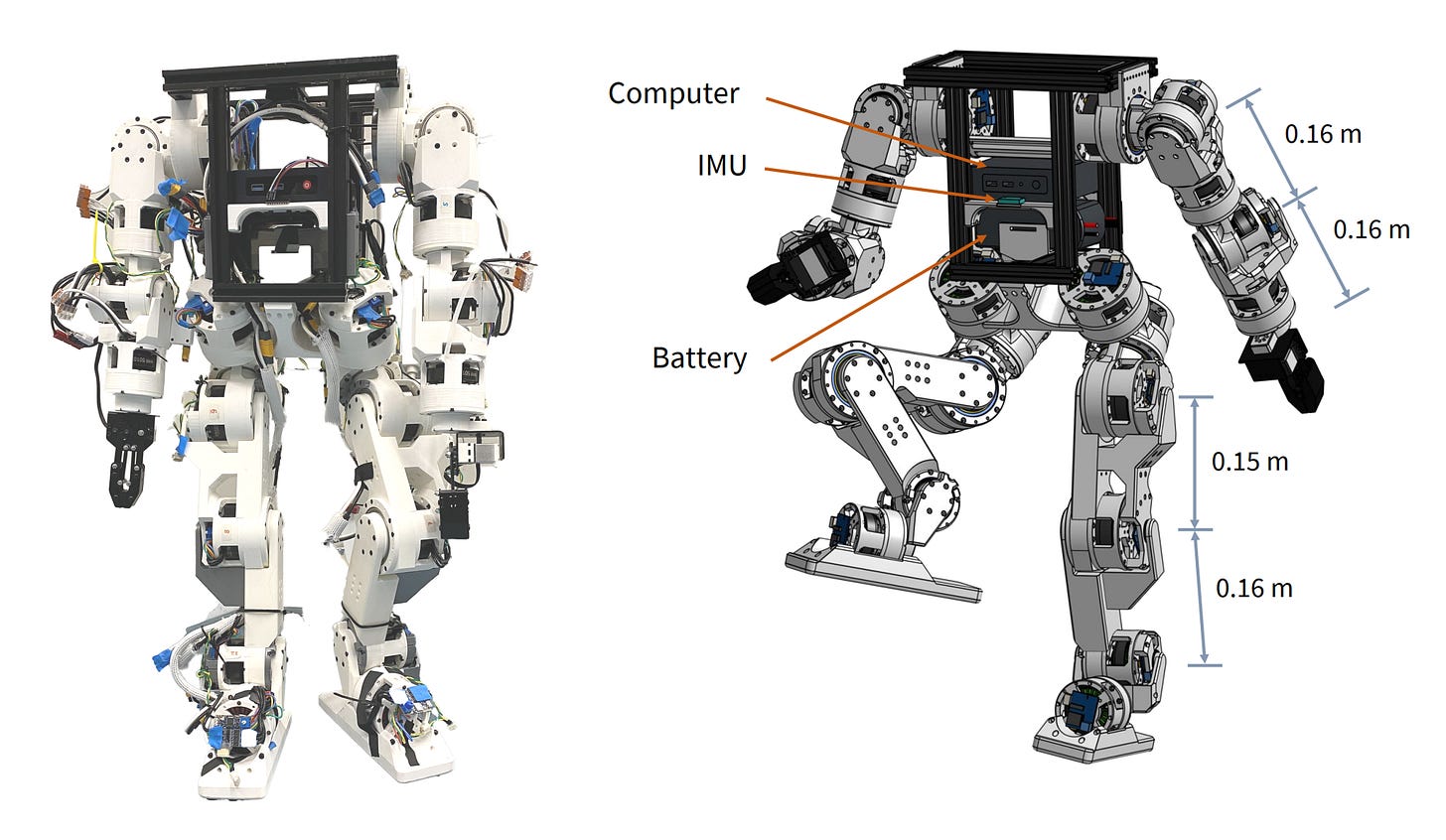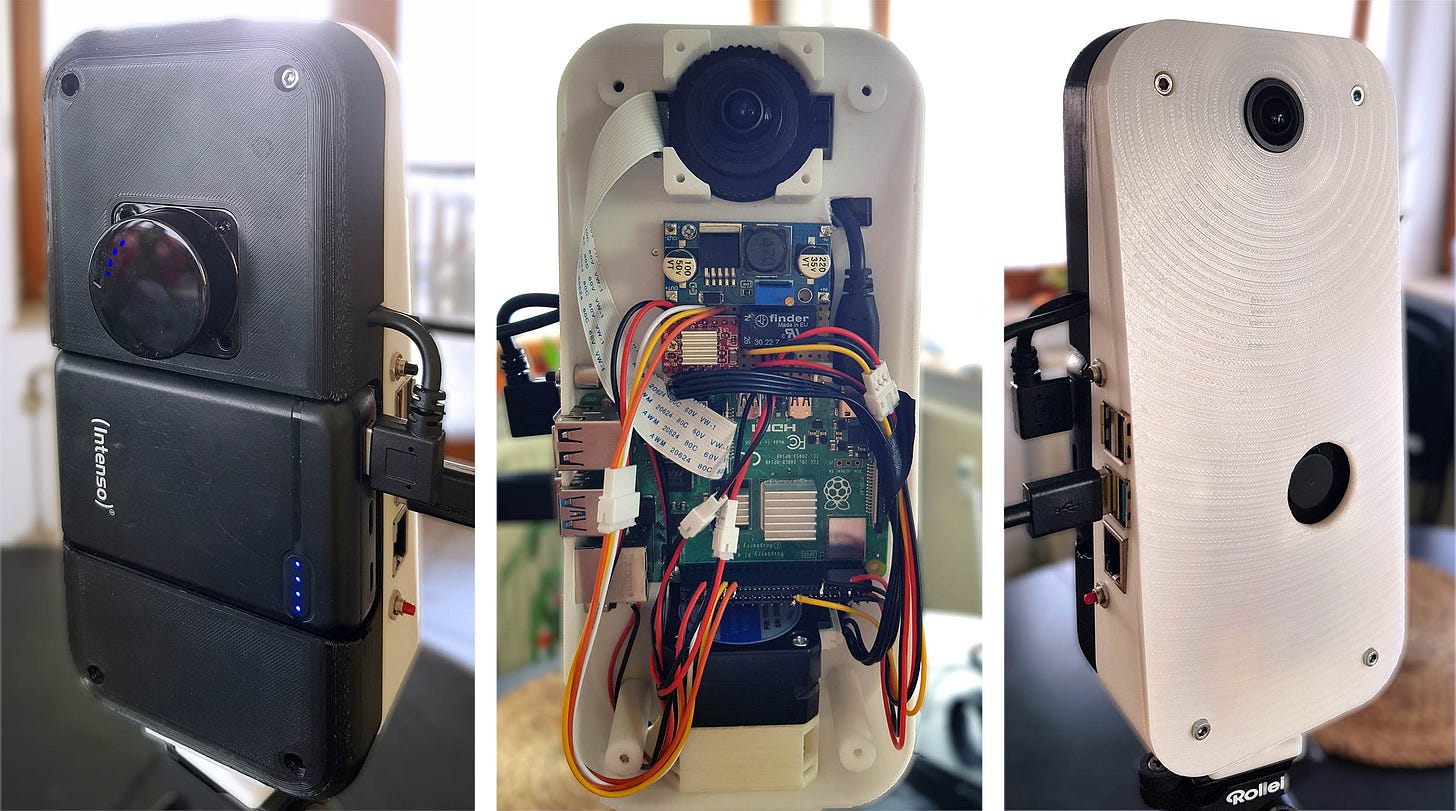Maker News - May 2025 Round Up
Bang on time this month! Promotions all round to the editorial team!
Welcome to the May 2025 Maker News Roundup
Welcome back, builders and backroom hackers. This month, we’re pushing wires, dodging film prices, and whispering to satellites just hours before launch.
If you thought I²C was a short-haul protocol, think again - Clem’s got it sprinting through ten meters of coax like it’s nothing. Meanwhile, other makers are printing memories with thermal tape, warping blinds with scrap motors, and even faking out thermostats with $40 SDRs.
From open-source humanoids that moonlight as Rubik's Cube solvers to ESP32s that can carry on a proper chat without pinging the cloud, May’s round-up isn’t just clever- it’s subversive, efficient, and often hilarious. Every story is a reminder that great hardware isn’t about cost - it’s about curiosity, timing, and a little bit of electrical tape.
Things to watch
I²C Stretch: Ten Meters, No Repeaters
Forget CAN - our man Clem pushes vanilla I²C through 10 m of coax at 1 MHz without a hiccup. On element14 presents, a pair of Raspberry Pi Picos reveal the limits-and the surprises-of this two-wire stalwart.
DIY Instant Camera: 150 Shots Per Dollar
Polaroid film at £2 a frame? Forget it. Mellow_Labs fuses an ESP32, thermal printer, and surplus drill battery to churn out 150 monochrome selfies for a single buck. Crazy wiring meets clever dithering for instant nostalgia on the cheap.
Party-Ready ESP32 Photo Booth
element14 presents rigs an ESP32-CAM, button, and five NeoPixels into a palm-sized booth that beams wide-angle selfies straight to a Telegram group, no printer or wasted paper. The $10 build pairs a hacked antenna with a laser-cut faceplate-minimalist hardware, maximal party output.
Hacking a Pocket Satellite Before Launch
Psychogenic Technologies races against a real-world countdown, juggling hot-plate reflows, custom MicroPython builds, and I²C black magic to ready a matchbox-sized experiment for orbit. Solder bridges, memory gremlins, and courier deadlines all try to ground the mission, but the code keeps pinging and the boards ship out anyway.
This one is a two parter! We’ve got the design phase:
And then we’ve got the - let’s make it actually work phase…
Coding Entropy on a Self-Made CPU
James Sharman boots his scratch-built console and races through a 48-hour jam in raw assembly, juggling pixel art, scan-line tricks, and an ever-advancing entropy wave. The result: a split-reality platformer that turns hardware constraints into sharp, surprising gameplay.
Announcements
Tiny Tapeout - back in business!
Tiny Tapeout is back open for business with IHP, taping out in September! Bear in mind that due to the way this shuttle is funded it has some limitations. More good news is the recent announcement their next Sky130 shuttle, which should be open in July.
In a different type of shuttle news, the TT06 ASIC has now successfully been integrated into the HUNITY satellite - ready for launch in 2026. If you want to write a MicroPython test for it to run in low earth orbit, join the discord channel here.
Things to read
Circuit Painter Turns Code Into Copper
On this page Circuit Painter treats KiCad like a canvas, letting you write geometric snippets that blossom into full-blown PCBs. Sketch arcs, drop footprints, rotate the whole thing with matrix math, and watch functional hardware materialize as fast as you can type.
Thirty-Dollar Smart Blinds Hack
$30 buys a motor, an ESP8266, and a dreamy eight-minute rise-and-shine routine. This page turns scrap parts and a salvaged silicone mount into a nearly silent, torque-sensing blind opener. Peek at the wiring and code in this post before you splurge on retail smart shades.
Hijacking the Landlord's Thermostat with SDR
A tenant records and replays 868 MHz packets via a $40 HackRF clone, tricking a rental boiler into obeying Home Assistant commands. If you like the sound of clandestine climate control, read this post before winter bites.
Xenolab: Raspberry Pi Plant Overlord
On this page, a hobbyist straps a Pi 5, 24 RGB suns, and a suite of sensors to a trio of carnivorous plants, creating a bench-top biosurveillance rig worthy of Weyland-Yutani. The tongue-in-cheek Triffid warning is only half a joke; Xenolab automates light, wind, moisture, and video while quietly logging whether you’re next on the menu.
ESP32 Chat Toy Gets OpenAI Voice
Talk back to your gadgets instead of yelling at the cloud. This page turns a $10 ESP32 into a secure, edge-powered speech-to-speech agent that holds ten-minute conversations, wraps them in Opus, and syncs everything through Deno, Supabase, and Next.js.
Berkeley Lite: $5K 3D-Printed Humanoid
Humanoids usually cost as much as sports cars; this page drops the bill to under five grand with 3D-printed cycloidal gearboxes and off-the-shelf parts. Berkeley engineers are posting every CAD file, line of code, and RL controller so anyone with a desktop printer can make a biped that walks, writes, and plays with a Rubik’s Cube.
Retro Mouse, Modern Voice Shortcut
A 1985 Apple M0100 gets reborn as a one-click Bluetooth speech-to-text trigger, hiding a Nordic nRF52840, USB-C charger and LiPo pack behind its beige shell. Wired tinkerers will want to bookmark this page for the CAD files, firmware and a reminder that yesterday’s hardware still has tomorrow’s tricks.
PiLiDAR: Open-Source 360° LiDAR Scanner
This page turns a Raspberry Pi, LD-series laser, and stepper motor into a pocket 3D lab that spits out 6K panoramas and color-soaked point clouds. Wiring diagrams, Python, and printable parts are ready for remixing on this page.
Cycle-Perfect C64 on Pico Swarm
This page at GitHub turns a squad of sub-€1 RP2040 chips into a cycle-accurate Commodore 64 that still chats happily with a real 1541 drive. Think FPGA-class precision, HDMI out, and old-school joystick ports—all running on pocket-change silicon.
Death Star Lamp, Powered by Wi-Fi
Turning an IKEA PS 2014 pendant into a Wi-Fi-driven Death Star calls for spray-painted trenches, a stepper-motor core and an ESP8266 brain ready for Home Assistant. This article maps out every layer, from granite-textured hull to browser-based firing controls.
Galaxian3 Revival at Fun World
The six-seat, twin-projector Galaxian3 once devoured expo crowds; now a volunteer strike team is coaxing its laserdiscs, CRTs and 68000 silicon back to life in New Hampshire. Inside this post you’ll get schematics, projector surgery, and the triumphant moment this 30-year-old megapod fires up for fresh credits.
Inside Starlink’s User Terminal Guts
SpaceX’s latest dish is more hacker-friendly than it looks. This page tears down the quad-core antenna, yanks its eMMC to unmask unencrypted firmware, and finds 41 mystery SSH keys that might keep Elon on the line. Remote space internet, meet basement reverse engineering.
Closing thoughts
Whether you’re breathing life into a vintage mouse or squeezing entropy into a hand-wired CPU, this issue proves the spirit of making is alive and creatively deranged.
We’re watching Raspberry Pis light up Triffid gardens, RP2040s impersonate SID chips, and Death Stars rise from the lighting aisle at IKEA. It's part science fair, part rebellion…
Until next month: keep flashing firmware, melting solder, and feeding the magic smoke - but not too much. And if you hack your landlord's thermostat, well, maybe it’s best if you don’t mention us…















